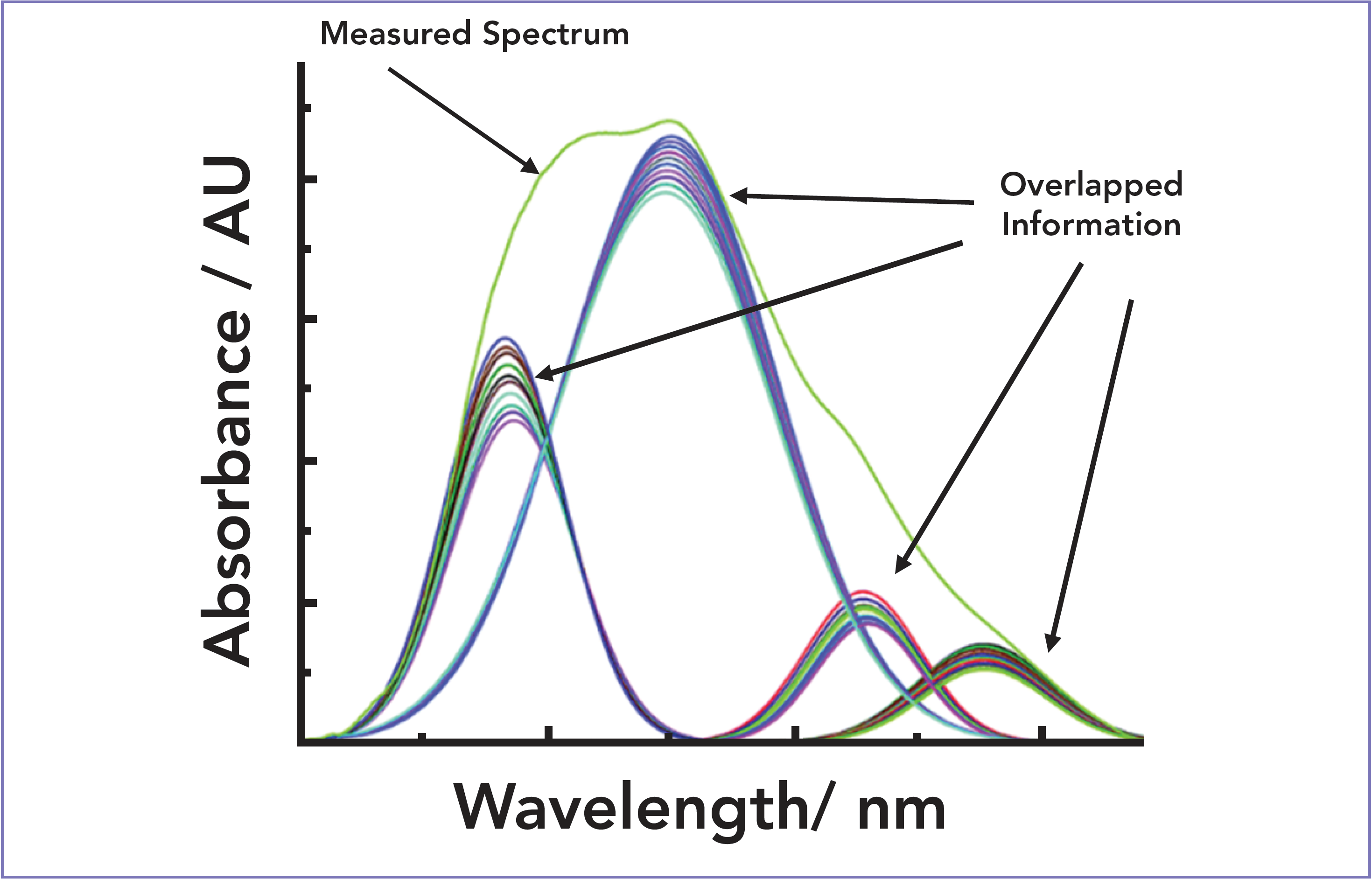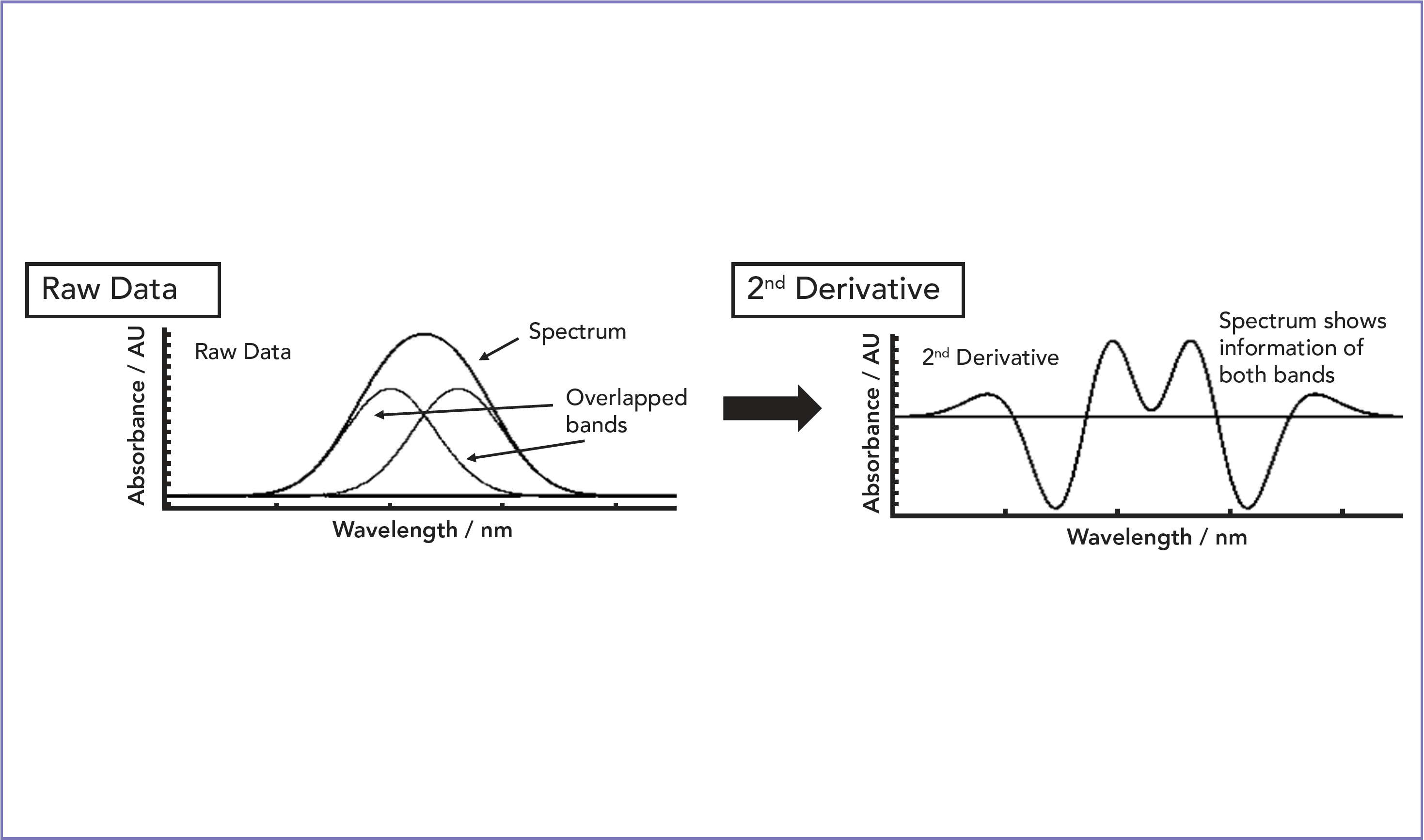Using Data Pretreatment to Improve Resolution
Did you know that applying the second derivative as a pretreatment to your near-infrared spectral data can help resolve overlapped peaks?
NIR absorption spectra are often complex being comprised of overtone and combination bands. This leads to broad overlapping absorption bands that are virtually impossible to identify in raw data. Moreover, chemical, physical, and structural properties of all species present in a sample influence the measured spectra causing baseline shifts and spectral backgrounds.

Raw data contains information from one or multiple overlapped bands and quite often the information of interest is even hidden. Pretreatment of NIR raw data is the first step of model development and optimization to correct for baseline shifts, backgrounds and to uncover hidden information. The use of a second derivative will allow the position of nearby peaks to be identified serving to virtually increase the spectral resolution. Therefore, the second derivative spectrum will show the information of all overlapped bands from the original spectrum.


Influence of Concentration in Conventional GPC/SEC and Advanced Detection GPC/SEC
March 21st 2025Sample concentration is a parameter that can influence the quality of gel permeation chromatography/size-exclusion chromatography (GPC/SEC) separations and the obtained results. Understanding this influence can help to support the development of reliable GPC/SEC methods.
